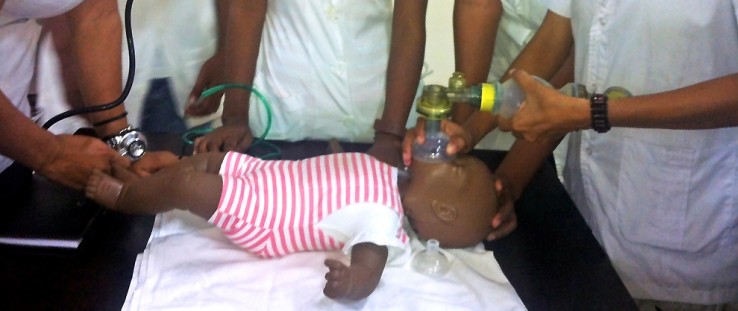 Newborn resuscitation training takes place at the hospital referral in Oecusse district by experts from St. John of God, a nursing technical assistance training program, and USAID’s HADIAK program.
Marianne Viatour, USAID Health Improvement Project
Newborn resuscitation training takes place at the hospital referral in Oecusse district by experts from St. John of God, a nursing technical assistance training program, and USAID’s HADIAK program.
Marianne Viatour, USAID Health Improvement Project
 Newborn resuscitation training takes place at the hospital referral in Oecusse district by experts from St. John of God, a nursing technical assistance training program, and USAID’s HADIAK program.
Marianne Viatour, USAID Health Improvement Project
Newborn resuscitation training takes place at the hospital referral in Oecusse district by experts from St. John of God, a nursing technical assistance training program, and USAID’s HADIAK program.
Marianne Viatour, USAID Health Improvement Project
Timor-Leste is one of the world’s newest nations, having gained its independence from Indonesia at the turn of the 21st century. Its population is also one of the world’s poorest, with some of the worst health indicators in the region. Although progress has been made—Timor-Leste achieved the highest under-5 mortality rate reduction in the world between 1990 and 2010—its maternal mortality ratio is still among the highest in the world. Deaths from pregnancy or pregnancy-related causes account for 42 percent of all deaths of women ages 15 to 49, according to the 2009-2010 Demographic Health Survey.
That is grim news that USAID and the U.S. Navy’s construction arm, the Seabees, aim to erase with their joint health improvement efforts. The Seabees bring their construction expertise, and the Agency brings years of experience in Timor-Leste improving service delivery and training health care workers—more than 10,000 since 2006.
USAID and the Seabees are partnering with Timor-Leste’s Ministry of Health and Australia’s Department of Foreign Affairs and Trade to assess and rehabilitate maternal and child health facilities while training health care workers in three highly populated and underserved districts of Timor-Leste: Ermera, Manatuto and Oecusse. USAID’s Health Improvement Project, known locally as HADIAK, provides refresher training in basic lifesaving skills and infection control for nurses and medical staff, as well as training on how to operate X-ray machines and incubators that had gone unused for some time due to lack of electricity. HADIAK means “to improve” in Tetun, the local language in Timor-Leste.
In some health centers, electricity is spotty, running water does not work properly or sometimes not at all, equipment is broken or out of date, and the only seat for a pregnant woman is on the floor. The country’s health care facilities are in poor condition as a result of neglect and damage during the country’s decades-long struggle for independence.
Building maintenance and restoration of medical equipment is a major challenge in Timor-Leste. While most urban health centers are connected to electricity, many of the rural areas are not. Transportation limitations and shortages of equipment impede the maintenance work in rural facilities.
A recent survey by Timor-Leste’s Ministry of Health shows that most of the health facilities are not adequately equipped to provide basic health care. Only 67 percent of health facilities surveyed had waterproof roofs and floors, and only 50 percent had their walls painted.
The poor state of the local health care facilities means that a majority of women still give birth at home. Only 30 percent of deliveries are assisted by a health professional, and only 22 percent of all deliveries take place at health facilities.
“One of the major reasons that births in facilities are so low in Timor-Leste is that the Timorese women have low confidence in the ability of health centers to provide quality services because of lack of functional equipment, electricity or running water,” said Dr. Teodulo Ximenes, USAID health project management specialist. “We know that increasing the number of births attended by skilled health professionals is crucial to further reducing maternal and neonatal mortality.”
Meeting a Need
Since 2011, HADIAK has been working in Timor-Leste to improve health care delivery, with a particular focus on underserved rural areas. Over the years, USAID has periodically teamed up with the Seabees—who have been making small infrastructure improvements to schools, health clinics and youth centers in Timor-Leste since 2006.
In June 2013, USAID and the Seabees renewed that joint work with a focus on repairing health facilities and improving health care delivery in partnership with the Ministry of Health’s Infrastructure Unit. Work got under way on several health facilities, including Oecusse Referral Hospital, Boacnana Community Health Center and two smaller health posts. At the maternity ward in the Gleno Community Health Center, Ermera district, for example, low water pressure left bathrooms unusable.
“Before the renovations, I had no water to wash my hands before and after checking sick children,” said Maria Camila Bebo, a nurse at the Gleno Community Health Center. “I had to look for available water in other parts of the health center between each patient. Sometimes there was no water at all. Now I have a sink with running water in my own consultation room.”
The Usitaco Medical Clinic in Oecusse district received a new, open-air kitchen to replace one that allowed smoke to flow inside the clinic.
At the Oecusse Referral Hospital in Oecusse district, the Seabees repaired four generators and installed solar power panels—ensuring a reliable power supply for the emergency room. For the first time in three years, the hospital’s two ambulances are in full working order. And the Seabees installed rainwater collection systems, replaced windows and doors, repaired leaking roofs and repainted structures.
HADIAK also helped the citizens of Oecusse district develop a community action plan to improve their use of health services.
“One of our goals is to develop and maintain a relationship with the host nation by improving their infrastructure,” said Ensign Tyler Williams, liaison officer for the Seabees Naval Mobile Construction Battalion 1. “The opportunity to partner with the USAID team here in Timor-Leste has proven to be a winning combination for our mission as U.S. Navy Seabees. At the end of the day, our Seabees and the host nation military engineers that we partner with know the work they did is creating a lasting impact. This is evident in the smiles of all of the local workers and patients that we have the honor of meeting.”
To date, the Seabees have teamed up with HADIAK to renovate and improve health care delivery at five health facilities in Ermera and Oecusse, including an emergency department and maternity wards.
The facilities and skilled workers are receiving high marks from patients, including Maria Gusmao, who delivered a baby at the Boacnana Community Health Center in Oecusse district.
“I’m very thankful to the midwives who helped me deliver my baby,” she said with a big smile on her face. “I think this maternity facility is very good with new beds and clean bathrooms. They also have very well-trained staff who responded to my needs. I know I made the right decision by choosing to deliver here, and not at home, because everyone here was ready to take care of me and my baby.”
The Seabees and USAID have made improvements to health care infrastructure and delivery in an area impacting approximately 112,000 people in 32 villages of the targeted districts. Visits from women seeking pregnancy and post-pregnancy health care at the renovated health facilities have increased significantly, according to district health care staff.
“Most of the emergency health conditions affecting the health of mothers and children can be effectively addressed by trained personnel in properly equipped health facilities,” said USAID Timor-Leste Mission Director John Seong. “Through the partnership with the Seabees, more health care providers are learning new technical skills in facilities that have the electricity, water and proper sanitation they need to effectively meet the needs of patients. By working together, we are able to contribute far more toward the Ministry of Health’s efforts to improve health outcomes for women and children, and build a more successful future for Timor-Leste.”







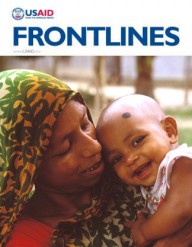

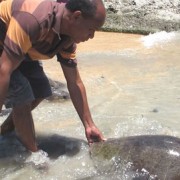
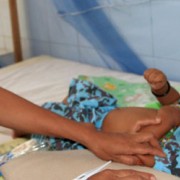
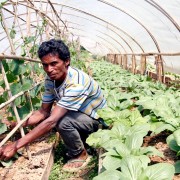
Comment
Make a general inquiry or suggest an improvement.